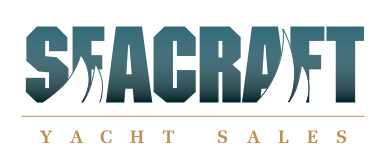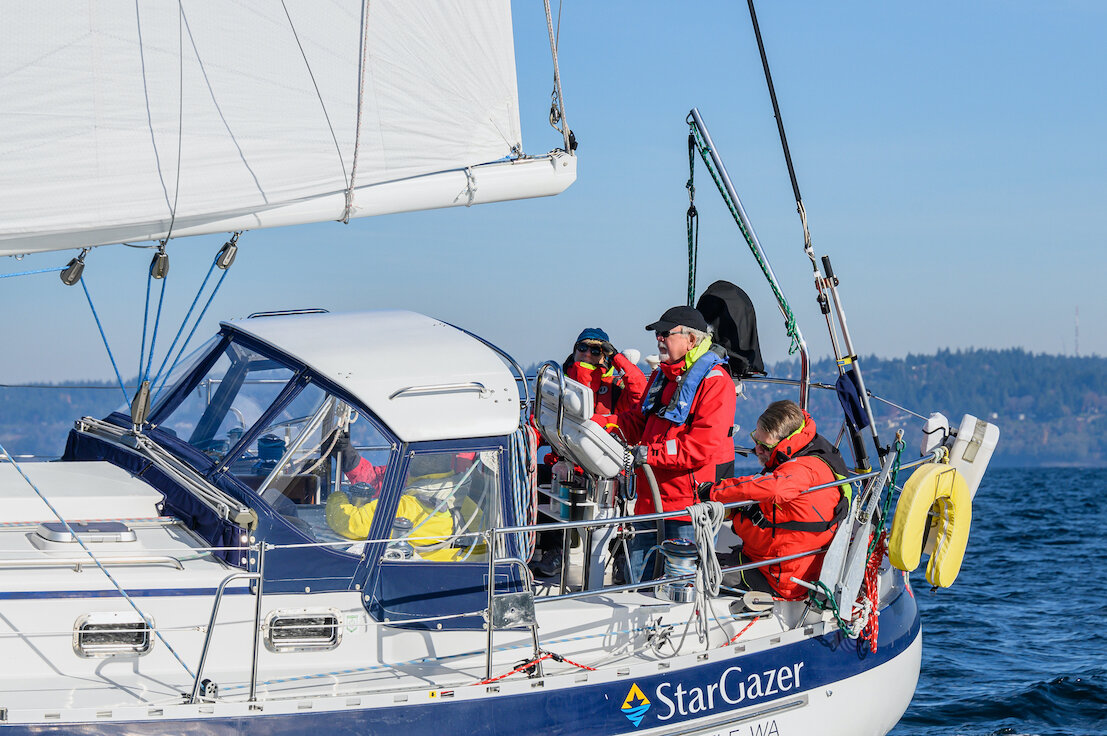I Can Race Sailboats?
/By Roy Kauffman
About 20 years ago, I wondered “can I race sailboats?” I decided to stop watching people on sailboats out on Puget Sound and BE the person aboard that sailboat. I took basic sailing courses, first at Sail Sandpoint and then at Windworks, both in Seattle. I dove head first into the sailing club. There were lots of like-minded people chartering boats and taking them out for the day, overnights or long weekends. I met many wonderful folks doing this and gained a good bit of sailing experience. It was a casual and fun way to get to know what sailing in the PNW was like. But I wanted more, I still wanted to race. It looked like too big a leap but, given the chance, I was going to try.
There were several boat owners in the club who raced their boats on a regular basis, and they were looking for crew. So, I signed up.
At first, as a “greenie”, I was relegated to the role of “rail meat” (sitting out on the rail as a counterweight to the wind) or, on a good day, grinding a winch. Truth be told, I was happy just to be on a sailboat that was racing. Anything over that was win win…. Or, maybe wind wind. ;-)
Take the Leap
Join a club, take some courses, chat up people who race and check message boards for local sailing groups… opportunities will arise. One day I was watching a race from the shore and spoke to the stranger next to me. By the next day I was on his mailing list and getting invited to crew on his boat. Crew members that are reliable to show up on race days and willing to learn are in demand.
The first thing you will notice when you start to race sailboats is that everyone is “ON”. The crew is focused on the skipper's voice, people are calling out the traffic around them and, above all, looking out for the safety of their shipmates.
When you get aboard any sailboat you hear a different language: sheet, reef, cleat, pit, foredeck, helm, etc… When you get aboard a racing sailboat, you hear that same language but at a much faster pace. The words are underpinned with a much more serious tone. Things happen quickly and in close quarters on a sailboat that is racing.
Typically, the people that get asked back to crew again are the folks that know their job and don’t require constant guidance but, at first, enthusiasm goes a long way. Listen and learn as much as you can. Ask your questions, but after the maneuver is finished and calm has returned, not in the middle of a tight mark rounding. Bring snacks to share - they will always be welcomed and remembered.
Like Taking a Master Class in Sailing
Early on, being part of a race crew is a master class in sailing. You are usually sailing with people who know way more than you about sailing and if you pay attention you can learn more in one race that you can learn in 10 leisurely cruises. Instead of 8 or 9 tacks in the course of a cruising day, you may find in a race that you do 20 or 30 maneuvers, from ducking a crossing boat to overtaking competitors, not to mention switching from upwind to downwind modes. Don’t let any of this intimidate you… it's all learning and fun.
Try to check the weather before each race. It will make you a more valuable part of the crew if you know what might be coming and how to spot it on the water. You will start thinking about how to prepare yourself for it, too. Knowing what to expect and having the confidence to deal with whatever it may be is empowering.
During a race, you are constantly monitoring your station. Sails are typically trimmed frequently to maximize boat speed. The safety equipment all boats are required to have on board now becomes much more part of your mindset. In close quarters racing there isn’t time to be shown how to use the Lifesling or what to do during a “crew overboard”. You should know. If you don’t, suggest a meeting day other than a race to learn the drill. The fact that you want to know the safety procedures will be seen as a plus.
When you reach the point of fitting into a crew and being invited on a regular basis, the effort you put out to get to that point will really pay off. As time goes on, a well-oiled crew will do most things without speaking more than a few words. I have had the pleasure of being on such a crew and believe me, when the stuff hits the fan things happen quickly and efficiently. A cohesive crew gets the job done, together as a team. That is reassuring from many perspectives.
Yes, You Can Race Sailboats
Even if your end goal is cruising, the lessons you learn while racing will improve your overall sailing experience. Racing puts you into a variety of sailing conditions. Weather spotting will become second nature, and learning boat handling in a variety of weather conditions will broaden your ability to sail safely. Theoretical lessons learned in a classroom become intuitive knowledge.
Unless you’re the skipper, you are not expected to know everything. Listen and follow instructions and you will learn. Your enthusiastic, bright, shiny face peering up during some tense moment will go a long way to keeping everyone’s spirits up on board. One thing we found is that a “thank you” goes a long way with your skipper and crewmates. Even if you don’t agree with an instruction, say “thanks” and see how it goes.
You don’t need to be in perfect physical shape to race, especially for the little local races. Eat right, stay hydrated and bring layers…. You’ll be fine.
Above all, have fun! There are lots of sailing races on Puget Sound in any given week, more so in the summer but cold weather racing is also a thing. This provides lots of opportunities to try your hand at racing. Why not get started now?
Contact me if you have any questions about starting sailing lessons or breaking into the racing scene. You can reach me at roy@seacraft.com.











